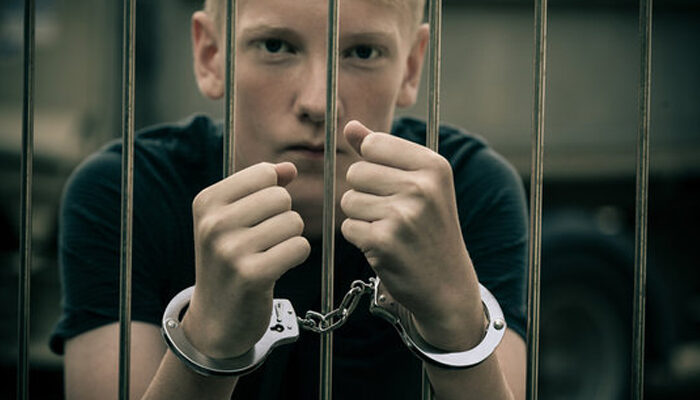Newstricky| There are many different methods of dealing with juvenile crimes that vary from state to state, but one thing is for sure—juvenile crimes should be taken very seriously.
The main reason why it is important to take these crimes seriously is that they can lead to bigger problems in the future. For example, if a child commits a crime and gets away with it, they may not learn anything from their actions and continue to commit more serious crimes later on in life.
There are five different methods of dealing with juvenile crimes:
Table of Contents
Deterrence
- Teach children to respect the law.
- Punish offenders swiftly and harshly.
- Punishment should be public so that others know they can’t get away with breaking the law.
- When possible, punishment should be consistent across similar cases in similar circumstances. The punishments for looting and theft, for example, should be equal to those for arson or assault. This way people don’t feel like there’s a double standard at play when it comes to enforcing laws in your community (or country).
- Make sure that the punishment is proportionate to the crime committed—the greater harm caused by an offense will mean a more severe punishment than would be given if no harm had been done at all!
Restitution
So you’ve committed a crime. And now you’re facing the possibility of jail time, paying fines, and being forced to go to counseling. But there’s another option that may be far less stressful: restitution.
Restitution is the reparation of damage or loss, which can include paying back any money that was stolen or reimbursing your victims for any other damages they incurred because of your crime (e.g., if someone drove drunk and crashed into another car on the highway, restitution would entail paying for repairs). In some cases, restitution can help ease the burden placed upon victims by crimes like these—and it can also teach criminals a valuable lesson about taking responsibility for their actions and being accountable to others when something goes wrong.
Because restitution is not considered punishment but rather a means of helping victims recoup losses caused by their offenses, it should always be proportional to what happened in order for them not just get back what was lost but also feel like justice has been served in some way—even if it’s simply by providing financial compensation for whatever harm occurred as part of committing a said offense.
Treatment/Education
Treatment is meant to solve the problem of juvenile crime by providing inmates with mental and physical rehabilitation. This process can take months or years, depending on the severity of the crime committed and how long it takes for an inmate to become rehabilitated. After treatment has been administered, juveniles are often released into society at their own request. It’s important for this step to be taken carefully because once incarcerated, a juvenile criminal will face probationary periods that last anywhere from one year up until their 18th birthday (depending on how old they were when they committed their first crime). Going back into society after being released from prison isn’t always easy; however, it can be done with a lot of hard work and dedication.
The most important thing is, to be honest with your child and to use the help of a lawyer. Lawyers will explain to you how the further process can work and can save your child from the sentence, if possible, or reduce the prison sentence when there are conditions for it. It is very important to find a trustworthy law firm, such as Lamont Law.
Rehabilitation
Rehabilitation is a process of changing the behavior of a person through treatment or education. Typically, rehabilitation involves helping people with mental illness or substance abuse problems to become self-sufficient. However, in juvenile delinquency cases, this can also mean teaching young offenders how to make positive choices in their lives and avoid committing crimes in the future.
The goal of rehabilitation is to prevent repeat offenses by teaching youth how their behaviors affect them, their peers, and society as a whole.
Incapacitation
Incapacitation is the removal of a juvenile from society, either by incarceration or by some other means. It can be imposed as a sentence for a crime committed and may also be used as an interim measure until further proceedings can be completed.
One example of incapacitation is when parents put their teen under house arrest for violating curfew. Another example would be if an individual was arrested for shoplifting at Walmart and given a suspended sentence, which meant that he/she would not receive jail time but instead must complete community service hours, pay restitution and possibly attend counseling sessions about theft prevention.
What else can you do?
Children who commit crimes need to be held accountable, but they also deserve a second chance to turn their lives around. Juvenile incarceration can destroy a young person’s future, and it’s important we use methods of dealing with juvenile crimes that are effective and fair.
- Provide mental health treatment for children convicted of crimes
- Keep children under 18 out of adult jails, where they are exposed to more violence and often traumatized by their experiences
- Stop prosecuting low-level offenses as felonies when they could be handled through fines or community service
- Use evidence-based alternatives to incarceration such as diversion programs, probation and community service rather than jail time.
Most juveniles who commit crimes just need help, not punishment. Rather than throwing them in prison and damaging their psyche, rehabilitation should be the goal of any justice system. Kids have brains that are still developing. The best way to stop juvenile delinquency is to hold them accountable for their actions and teach them the repercussions of such actions before they even think of committing them.




